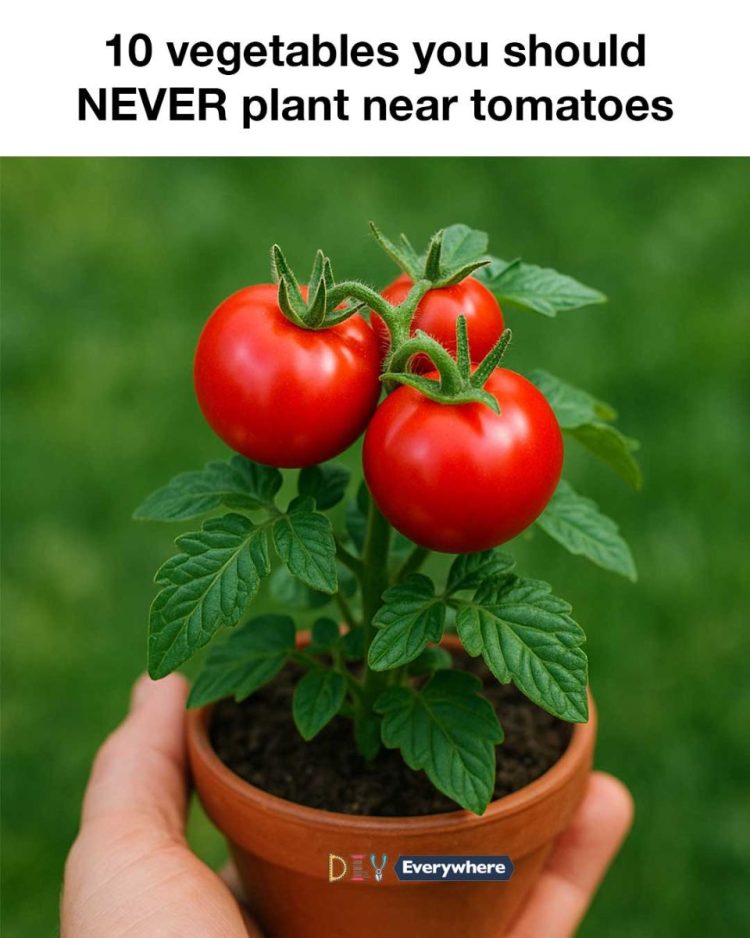Gardening is both an art and a science, requiring careful consideration of plant compatibility to ensure a thriving garden. Tomatoes, a staple in many gardens, are particularly sensitive to the plants they share space with. Understanding which vegetables to avoid planting near tomatoes can help prevent poor growth and disease, leading to a more bountiful harvest.
Companion planting is a practice that involves strategically placing plants together to enhance growth, deter pests, and improve flavor. While some plants make excellent companions for tomatoes, others can hinder their growth or even lead to disease. In this article, we will explore ten vegetables you should never plant near tomatoes to ensure your garden flourishes.
1. Understanding Companion Planting
Companion planting is a gardening technique where certain plants are grown together to benefit one or both of them. This practice can help improve soil nutrients, provide natural pest control, and increase crop yield. For example, basil is often planted near tomatoes because it can enhance their flavor and repel harmful insects.
However, not all plants are compatible. Some can compete for nutrients, attract pests, or spread diseases. Understanding the relationships between different plants is crucial for successful gardening. For tomatoes, which are heavy feeders, it is essential to avoid planting them with vegetables that will compete for the same nutrients or attract similar pests.
2. The Importance of Plant Compatibility
Plant compatibility is vital in gardening as it can significantly impact plant health and productivity. Incompatible plants can lead to stunted growth, reduced yields, and increased susceptibility to pests and diseases. For instance, planting tomatoes near certain vegetables can result in nutrient competition, as tomatoes require a lot of nitrogen, phosphorus, and potassium.
Moreover, some plants release chemicals into the soil that can inhibit the growth of others. This phenomenon, known as allelopathy, can be detrimental to sensitive plants like tomatoes. By understanding which plants are compatible, gardeners can create a harmonious environment that promotes healthy growth and maximizes harvests.
3. Why Tomatoes Need Space
Tomatoes are vigorous growers that require ample space to thrive. They need at least 18 to 24 inches between plants to ensure proper air circulation and sunlight exposure. Crowding tomatoes can lead to increased humidity around the plants, creating a perfect environment for fungal diseases like blight.
Additionally, tomatoes have extensive root systems that require room to spread and access nutrients. Planting them too close to other vegetables can lead to competition for resources, resulting in stunted growth and lower yields. Providing tomatoes with enough space is crucial for their health and productivity.
4. Fennel: A Poor Companion for Tomatoes
Fennel is known for its allelopathic properties, meaning it releases substances that can inhibit the growth of nearby plants. When planted near tomatoes, fennel can stunt their growth and reduce fruit production. This is because fennel’s root exudates can interfere with the root development of tomatoes, leading to poor nutrient uptake.
To avoid these negative effects, it is best to plant fennel in a separate area of the garden, away from tomatoes and other sensitive plants. This will ensure that both fennel and tomatoes can grow without hindrance.
5. Cabbage and Its Relatives: Avoid Planting Near Tomatoes
Cabbage and its relatives, including broccoli, cauliflower, and Brussels sprouts, are part of the Brassicaceae family. These vegetables can compete with tomatoes for nutrients, particularly nitrogen, which is essential for leafy growth. Additionally, they can attract similar pests, such as cabbage worms and aphids, which can easily spread to tomatoes.
To prevent nutrient competition and pest issues, it is advisable to plant cabbage and its relatives in a different section of the garden, away from tomatoes. This separation will help ensure that both types of plants can thrive without interference.
6. Corn: A Rival for Resources
see continuation on next page
